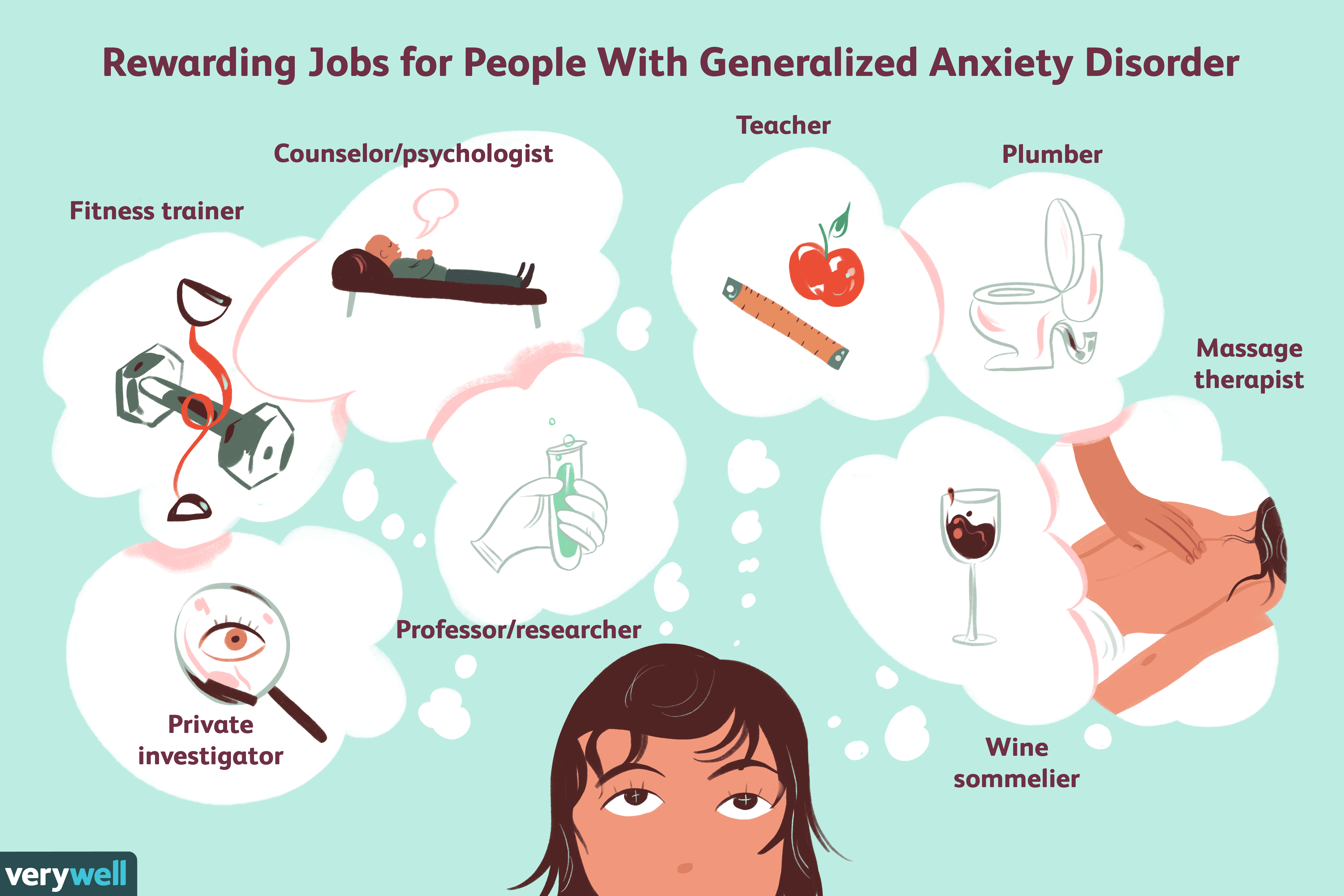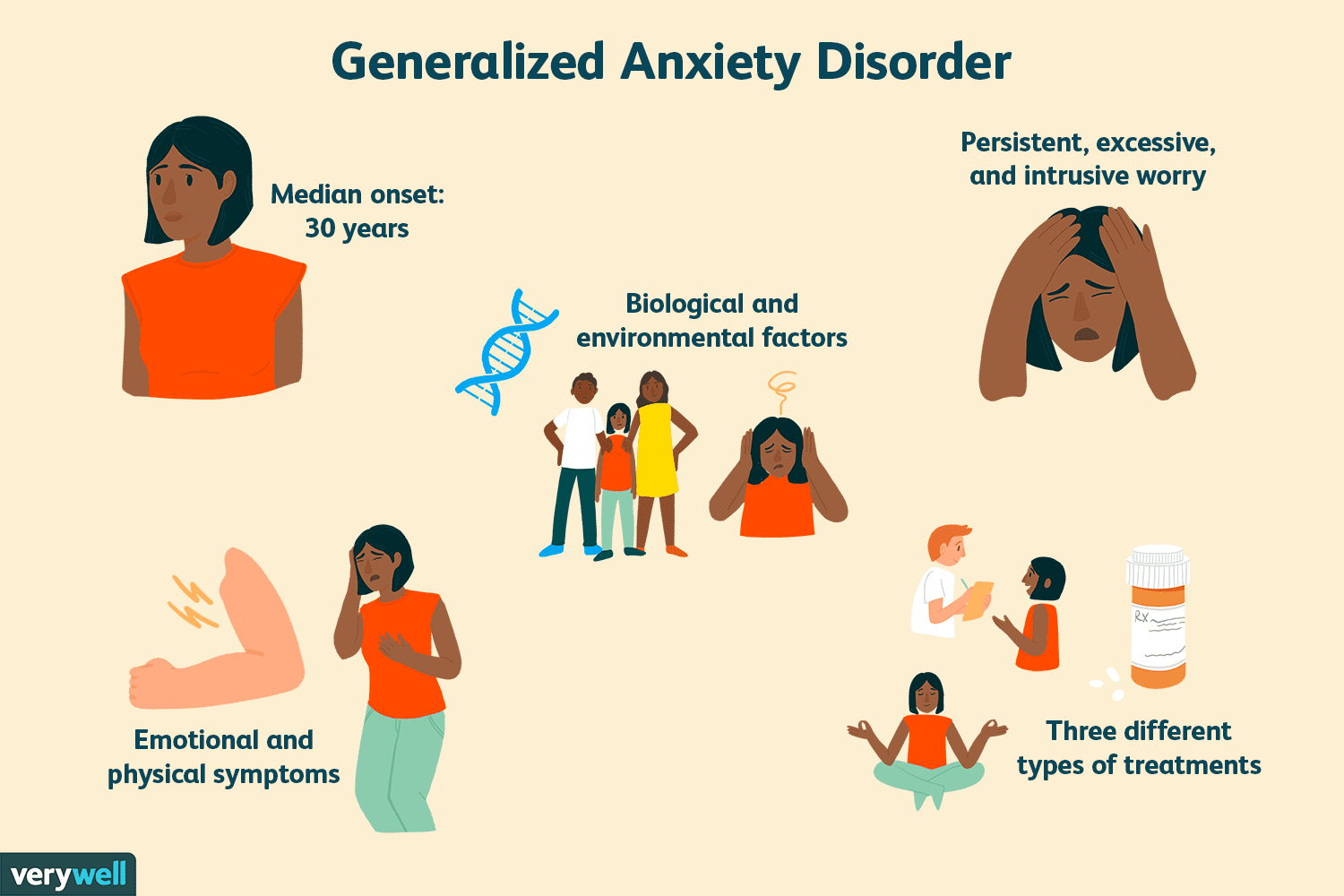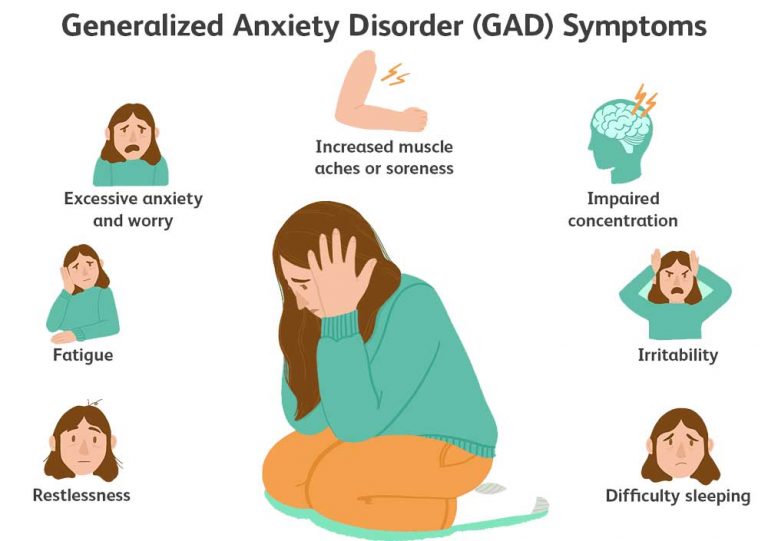Causes Of Anxiety Disorders
The answer to this question is not simple. There are many factors that may lead to anxiety disorder including family history, personality traits, and environmental stimulation.
There are a lot of things that can cause anxiety disorders. Factors such as-
-
A persons individual personality traits,
-
A family history of mental illness or trauma,
-
Environmental factors
- Genes
These all can all contribute to the development of an anxiety disorder. Anxiety disorders are one of the most common mental health disorders in the United States. Nearly 40 million adults in the United States have an anxiety disorder. Women are twice as likely to suffer from an Anxiety Disorder than men.
What To Do During A Panic Attack
If you have a panic attack, the best thing to do is to stay put and breath slowly until the attack stops.
Avoiding public places does not prevent panic attacks. On the contrary, it can strengthen your attacks and cause you to isolate yourself. Keep in mind that even the most unpleasant and intense panic attacks only last a few minutes and have never killed anyone.
Screening For Depression And Anxiety: The Prime
The presence of an anxiety disorder may serve to mask the presence of depression and vice versa. This is partly due to the overlap of symptoms in these disorders. For example, insomnia and loss of appetite may be symptoms of both illnesses. Incomplete diagnosis may be due to the assumption that once the first diagnosis has been made, one’s diagnostic work is accomplished. As noted previously, all of the available epidemiologic data suggest that the presence of one disorder significantly increases the likelihood that the other disorder may also be present.
Relatively few scales are available that screen for depression and anxiety and have been validated in the primary care setting. Scales meeting these criteria include the Primary Care Evaluation of Mental Disorders , the Symptom Driven Diagnostic System for Primary Care , and the Center for Epidemiologic Studies Depression Scale . The CES-D is a subscale of a larger, population-based research screening tool, the General Health Questionnaire .
Read Also: How To Control Social Anxiety
Key Points About Panic Disorder
- Panic disorder is an overreaction of fear and anxiety to daily life stressors.
- The reaction causes a hyperphysical response, followed by intense worry that another attack will happen soon. This can upset the ability to function normally.
- It is a common disorder and can often lead to depression.
- Panic disorders can be disabling because you become so afraid of when the next panic attack may happen that you can’t cope with regular tasks.
- Treatment involves use of anti-anxiety medicines and antidepressants along with cognitive behavioral therapy.
What Are The Consequences Of Comorbidity

Patients who have depression and anxiety comorbidity have higher severity of illness, higher chronicity, and significantly greater impairment in work functioning, psychosocial functioning, and quality of life than patients not suffering from comorbidity.
One of the most important clinical reasons to screen for comorbidity is that unrecognized depression/anxiety comorbidity is associated with an increased rate of psychiatric hospitalization and an increased rate of suicide attempts. For example, suicide attempt rates are 70% higher in patients with comorbid major depression and panic disorder than in those with major depression alone and more than 4 times higher than in patients suffering from uncomplicated panic disorder. Among anxiety disorders, posttraumatic stress disorder has the highest rate of comorbid psychiatric disorders, including alcohol abuse. Comorbid depression and anxiety have also been shown to significantly increase the suicide attempt risk above what is contributed by major depression alone. The results of a large national survey found that anxiety comorbidity was associated with a 2.5-fold increased likelihood of hospitalization, with patients suffering from concurrent panic disorder being most at risk .
Read Also: How Can I Fall Asleep With Anxiety
Diagnosis Of Anxiety Disorders
Anxiety disorders are among the most common mental disorders in the United States, with an estimated 18% of adults living with one or more anxiety disorders.
Anxiety disorders are not always easy to diagnose. For some people, anxiety can come and go without them ever knowing what triggered it. For others, certain situations or things they see every day can also cause anxiety. Some people may even have multiple triggers that lead to their anxiety disorder.
Anxiety Disorders take up six points on the American Psychiatric Associations Diagnostic and Statistical Manual of Mental Disorders . The DSM-5 defines different types of Anxiety Disorders: generalized anxiety disorder, panic disorder, specific phobia, social phobia, separation anxiety disorder, and obsessive-compulsive disorder.
Anxiety is often accompanied by other mental health issues like depression and substance abuse problems. An estimated one in five adults has an anxiety disorder. Anxiety can be triggered by many things, including stress at work, problems with relationships, or events that are unrelated to anything specific. The symptoms of anxiety are also different for everyone, but they often include physical symptoms like heart palpitations or chest pain.
Differential Diagnosis And Comorbidity
When evaluating a patient for a suspected anxiety disorder, it is important to exclude medical conditions with similar presentations . Other psychiatric disorders use of substances such as caffeine, albuterol, levothyroxine, or decongestants or substance withdrawal may also present with similar symptoms and should be ruled out.5
Complicating the diagnosis of GAD and PD is that many conditions in the differential diagnosis are also common comorbidities. Additionally, many patients with GAD or PD meet criteria for other psychiatric disorders, including major depressive disorder and social phobia. Evidence suggests that GAD and PD usually occur with at least one other psychiatric disorder, such as mood, anxiety, or substance use disorders.10 When anxiety disorders occur with other conditions, historic, physical, and laboratory findings may be helpful in distinguishing each diagnosis and developing appropriate treatment plans.
Also Check: What To Do When Anxiety Is Overwhelming
When Someone Is Having A Panic Attack
Below are some tips for you or your loved one to consider during a panic attack:
- Anxiety cannot increase forever and you cannot experience peak levels of anxiety forever. Physiologically there is a point at which our anxiety cannot become any higher and our bodies will not maintain that peak level of anxiety indefinitely. At that point, there is nowhere for anxiety to go but down. It is uncomfortable to reach that peak but it is important to remember this anxiety will even out and then go down with time.
- Emotions are like a wave, they will come and they will go.
- You have experienced this before, you know what to expect, and you will be able to handle it.
- Avoidance is anxiety’s best friend. Avoidance now will mean sustained anxiety in the future.
The following websites and brochures provide useful information for helping and supporting loved ones with panic disorder:
Causes Of Panic Attacks And Panic Disorder
Although the exact causes of panic attacks and panic disorder are unclear, the tendency to have panic attacks runs in families. There also appears to be a connection with major life transitions such as graduating from college and entering the workplace, getting married, or having a baby. Severe stress, such as the death of a loved one, divorce, or job loss can also trigger panic attacks.
Panic attacks can also be caused by medical conditions and other physical causes. If youre suffering from symptoms of panic, its important to see a doctor to rule out the following possibilities:
Don’t Miss: How To Deal With Dental Anxiety
The Challenges Of Living With Anxiety Disorders
Living with anxiety disorder can be difficult for adults and children, but it is very common. According to the National Institute of Mental Health, just over 18% of adults in the US have any anxiety disorder in a given year. And just over 14% of children aged 13-18 years old have an anxiety disorder at some point during their lifetime.
Anxiety disorders are a group of mental disorders characterized by an excessive, unrealistic, or uncontrollable fear that the individual will experience the anxiety situation again. Anxiety is a state of worry and fear about potentially dangerous future events. It can be categorized as an emotional disorder that is often caused by stress, which is then usually accompanied by physical symptoms.
But what are the challenges? Living with an anxiety disorder means that you are always in your head worrying about the future or things that may or may not happen.
What Are The Risk Factors For Agoraphobia
Risk factors for developing agoraphobia include:
- Having panic attacks or other phobias.
- Experiencing stressful life events, such as the death of a loved one, being attacked, or being abused.
- Having a nervous or anxious nature.
- Responding to panic attacks with excess fear and apprehension.
- Having a relative with agoraphobia.
Also Check: How To Deal With Anxiety
Depression And Traumatic Stress
There is evidence that mental health problems, in particular depression and traumatic stress, is linked to cardiovascular diseases. Whereas mental health problems are known to be associated with risk factors for cardiovascular diseases such as smoking, poor diet, and a sedentary lifestyle, these factors alone do not explain the increased risk of cardiovascular diseases seen in depression, stress, and anxiety. Moreover, is independently associated with increased risk for incident coronary heart disease, even after adjusting for depression and other covariates.
What Causes Panic Disorder

Panic disorder sometimes runs in families, but no one knows for sure why some family members have it while others dont. Researchers have found that several parts of the brain, as well as biological processes, play a key role in fear and anxiety. Some researchers think that people with panic disorder misinterpret harmless bodily sensations as threats. By learning more about how the brain and body functions in people with panic disorder, scientists may be able to create better treatments. Researchers are also looking for ways in which stress and environmental factors may play a role.
Recommended Reading: How To Calm Social Anxiety In The Moment
What A Panic Attack Feels Like
Panic attacks produce intense fear that begins suddenly, often with no warning. An attack typically lasts for 5 to 20 minutes. In extreme cases, symptoms may last for more than 1 hour. The experience is different for everyone, and symptoms often vary.
Common symptoms associated with a panic attack include:
The symptoms of a panic attack often occur for no clear reason. Typically, the symptoms are not proportionate to the level of danger that exists in your environment.
Because these attacks cannot be predicted, they can significantly affect your everyday life.
Types Of Anxiety Disorders:
Generalized Anxiety Disorder is characterized by chronic and exaggerated worry and tension, much more than the typical anxiety that most people experience in their daily lives. People may have trembling, twitching, muscle tension, nausea, irritability, poor concentration, depression, fatigue, headaches, light-headedness, breathlessness or hot flashes.
Panic Disorder: People with panic disorder have panic attacks with feelings of terror that strike suddenly and repeatedly with no warning. During the attacks, individuals may feel like they can’t breathe, have lost control, are having a heart attack or even that they are dying. Physical symptoms may include chest pain, dizziness, nausea, sweating, tingling or numbness, and a racing heartbeat. Some people will have one isolated attack, while others will develop a long term panic disorder either way, there is often high anxiety between attacks because there is no way of knowing when the next one will occur. Panic disorders often begin early in adulthood. Many people with panic disorder also suffer from agoraphobia . See more on Panic Attacks.
Phobias are irrational fears. Individuals with phobias realize their fears are irrational, but thinking about or facing the feared object or situation can bring on a panic attck or severe anxiety.
Recommended Reading: Does Clonidine Help With Anxiety
Psychiatrist In New York Ny And Southbury Ct
Your genetics, personality, brain chemistry, and life experiences play a role in the development of an anxiety disorder. At Psy-Visions, we take an individualized approach to treatment, since no two people are exactly alike, and each has unique life experiences.
Dr. Mark Stracks creates customized treatment plans that address the underlying causes of anxiety disorders and is an expert in treating adult and adolescent patients. Our patients love his calm and comforting demeanor.
Its time to get the help you need. It could make a big difference in your life. To schedule a consultation with Dr. Stracks, call Psy-Visions at 887-2918 for New York or 405-1745 for Connecticut. You can also fill out our contact form to request an appointment.
What Should I Do If I Have Chest Pain
Do not ignore any type of chest pain or avoid getting treatment.
If your chest pain is new, comes on suddenly, or lasts longer than five minutes after you rest or take medication, call 911 or have someone take you to the closest emergency room.
If your chest pain goes away or comes and goes, see your healthcare provider as soon as possible to find out what is causing the pain, even if it is not severe.
You May Like: How To Get Rid Of Test Anxiety
Treatment For Panic Disorder
The American Psychiatric Association recommends treating patients with panic disorder when symptoms cause dysfunction or significant distress in aspects of an individuals life as their such as work, family life, social obligation, and leisure activities. Benzodiazepines such as Valium are not a first-line recommended treatment approach for individuals with panic disorder and are for individuals who have panic disorder that has not been successfully treated with any other psychotherapy or pharmacological treatment. The first-line treatment for panic disorder is cognitive behavioral therapy with or without medication. Medications that are recommended include antidepressants, specifically selective serotonin reuptake inhibitors .
How Is Numbness Managed Or Treated
Treatment for numbness varies according to the cause. The goal of treatment is to correct the condition causing the numbness. Your doctor will determine the best treatment for you based on the underlying condition and the nerves involved. Some common treatments for numbness include:
- Nerve pain medications
- Controlling blood sugar in people with diabetes
- Physical therapy exercises to strengthen the spine or help ease movement
- Surgery to remove a tumor or repair a problem in the spine
Recommended Reading: What God Says About Anxiety
What Is The Outlook For People With Agoraphobia
About a third of people with agoraphobia overcome the disorder and become symptom-free. Another half learn to manage their symptoms better but still have some anxiety.
You and your loved ones will need to have patience as you heal from agoraphobia. Many people need 12 to 20 weeks of CBT if they also take medication. Without medication, therapy might take up to a year.
For The Digestive System

A euthanaticum is used for and . Euthanasia is not permitted by law in many countries, and consequently, medicines will not be licensed for this use in those countries.
Administration is the process by which a patient takes a medicine. There are three major categories of drug administration , , and other .
, the most common form of enteral administration, can be performed in various including , , or , and other routes likewise have various forms.
The drug may contain a single or multiple .
They can be administered all at once as a , at frequent intervals or continuously. Frequencies are often abbreviated from Latin, such as every 8 hours reading Q8H from Quaque VIII Hora.
In the fields of , and , drug discovery is the process by which new drugs are discovered.
Modern drug discovery involves the identification of screening hits, and optimization of those hits to increase the , , efficacy/, stability , and oral . Once a compound that fulfills all of these requirements has been identified, it will begin the process of prior to . One or more of these steps may, but not necessarily, involve .
is the process of bringing a new drug to the market once a has been identified through the process of . It includes pre-clinical research and and may include the step of obtaining regulatory approval to market the drug.
| This section needs expansion. You can help by adding to it. |
In many jurisdictions are regulated.
Also Check: How Can I Overcome My Social Anxiety